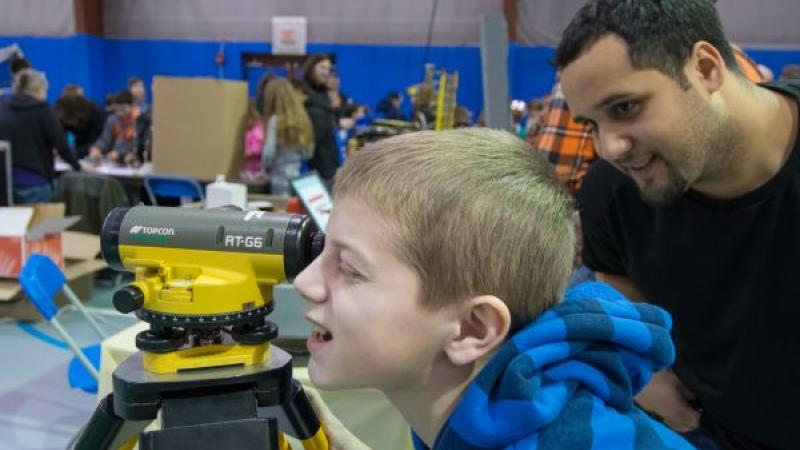It’s all in a day’s work
Published 03.31.2017
By Elaine Lambert.
When she received the Presidential Medal of Freedom in 2015 for her role in sending the first Americans into space, Katherine Johnson declared, “It was just another day’s work.”
Johnson was a human computer whose expertise supported historic space flights including the first American in space (Alan Shepard in 1961), John Glenn’s orbit of the earth the following year and the 1969 moon landing.
I am part of the Kennedy-influenced generation that grew up watching Apollo missions on television, yet I had no idea that NASA’s early success was guided, in part, by a group of young women doing complicated mathematical calculations. They were the computers, before there were computers.
It took an Academy Award-nominated film, Hidden Figures, based on a book by Margot Lee Shetterly, to bring the stories of Katherine Johnson, Dorothy Vaughan and Mary Jackson to our awareness. I am grateful to the storytellers who did so, because these stories truly matter.
I loved the movie and I left the theatre wanting to know more. What had inspired these women–these young, African-American women who studied and worked during the dark ages of segregation–to pursue complicated careers in a workplace system that openly discriminated against them?
Biographies on the NASA website reveal that Katherine Johnson’s “intense curiosity and brilliance with numbers vaulted her ahead several grades in school,” and “for Mary Winston Jackson, a love of science and a commitment to improving the lives of the people around her were one and the same.”
A New York magazine article states that Dorothy Vaughan was “possessed of an inner confidence that attributed no shortcoming either to her race or her gender” and “welcomed the chance to prove herself in a competitive academic arena.”
Curiosity, commitment, confidence–words used to describe the Hidden Figures heroines–are attributes we should encourage in every student, every child. There is no way to predict where their futures might lead. It is our responsibility to guide them in the discovery of their own potential.
To inspire a new generation, we must share stories of women and men who pursue excellence and persist through the rigors of academics and the challenges of society and the workplace. We also must connect the attitudes these remarkable individuals hold throughout their lives–from childhood through career–to their successes, in order to motivate all students to dream big and do the work required to achieve their aspirations.
Books and films like Hidden Figures and October Sky–based on Rocket Boys, a book by Homer Hickam that describes his experience as a coalminer’s son who became a NASA engineer–depict real-life adventures of exceptional, “ordinary” men and women who make history. Sharing them with your family members and with students in your classrooms can be truly inspirational.
I think it is important to note that all three of the women featured in Hidden Figures began their careers as teachers. Before they earned the respect of astronauts like John Glenn, they set the standards for students in their classrooms. The ripple effect of their contributions have, no doubt, passed through several generations.
“I loved going to work every single day,” Katherine Johnson told her colleagues at NASA when she retired in 1986. What more can any of us aspire to–and what more can we seek for our children–than the opportunity to say we love our work, every day?

